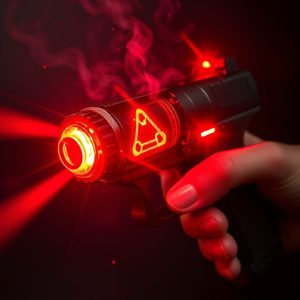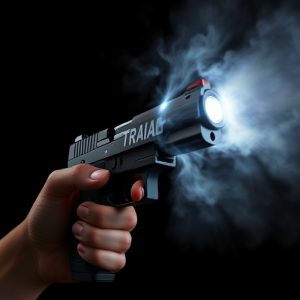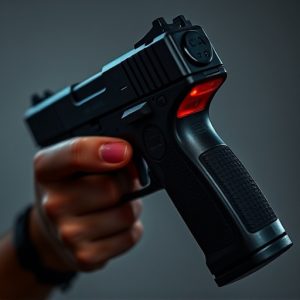Triad Stun Gun Safety: Preventing Accidental Discharges
Accidental discharges of triad stun guns pose significant risks due to mechanical failures, user err…….
Accidental discharges of triad stun guns pose significant risks due to mechanical failures, user error, or external distractions in stressful public settings. These incidents can cause physical harm and lead to severe legal consequences. To mitigate these risks, users must understand the causes, practice proper handling, and undergo comprehensive training. The Triad Stun Gun features innovative sensor technology, intelligent circuit systems, and ergonomic design for safe and effective personal defense. Users share responsibility for preventing accidental discharge by treating the device as live, securing it from children and pets, providing training, inspecting for damage, replacing batteries, and understanding local laws governing stun gun ownership and use.
Accidental discharge of self-defense devices like the triad stun gun can lead to severe consequences. This article delves into understanding the causes and risks associated with such incidents, highlighting the critical need for robust safety mechanisms. We explore the role of innovative design features in enhancing the triad stun gun’s safety profile, focusing on user-centric solutions. Additionally, best practices for users are discussed, emphasizing safe handling and storage to prevent accidental discharges and ensure personal security.
- Understanding Accidental Discharge: Causes and Risks
- The Role of Safety Features in Triad Stun Gun Design
- Best Practices for Users: Ensuring Safe Handling and Storage
Understanding Accidental Discharge: Causes and Risks
Accidental discharge, a potentially dangerous outcome associated with firearms and stun guns, occurs due to unexpected triggers. The primary causes include mechanical failures, user error, or external factors. With stun devices like the triad stun gun, understanding these discharges is paramount for safety. Risks arise from both physical harm to the user or bystanders and legal consequences, especially considering the escalating laws surrounding stun guns.
Mechanical issues, such as defective triggers or battery malfunctions, can lead to accidental activation. User error, like not properly securing a weapon or mistaking similar-looking devices, contributes significantly. In public settings, external distractions or situations with high stress levels increase the likelihood of accidental discharge. Triad stun guns, like any other equipment, demand careful handling and proper training to mitigate these risks effectively.
The Role of Safety Features in Triad Stun Gun Design
In the realm of personal safety devices, the triad stun gun stands out as a revolutionary tool designed to deter and incapacitate potential assailants. Its unique features play a pivotal role in accidental discharge prevention. The first line of defense lies in its sophisticated sensor technology, which detects sudden movements and proximity, ensuring the device only activates when intended. This advanced mechanism significantly reduces the risk of accidental triggering, a common concern with traditional stun guns.
Furthermore, the triad stun gun incorporates an intelligent circuit system that prevents over-discharge, prolonging battery life and minimizing the impact on users. Its ergonomic design also includes safety locks and triggers, making it user-friendly while ensuring only authorized individuals can activate the device. These safety features contribute to the overall effectiveness of the triad stun gun as a reliable personal defense mechanism, offering peace of mind in high-risk situations.
Best Practices for Users: Ensuring Safe Handling and Storage
When it comes to accidental discharge prevention, users play a pivotal role in ensuring the safety of themselves and others. Best practices for handling and storing a triad stun gun involve adhering to several key guidelines. Firstly, always treat the device as if it is live, even when turned off or stored, as electrical energy can remain present. Secondly, keep the stun gun out of reach of children and pets by securing it in a locked cabinet or safe location. Thirdly, implement proper training to ensure users understand how to activate and control the device, minimizing the risk of accidental deployment. Regularly inspect the stun gun for any signs of damage or malfunction, and replace batteries as needed to maintain optimal performance. Lastly, familiarize yourself with local laws and regulations regarding stun gun ownership and use, ensuring compliance at all times.
Accidental discharge is a serious concern, but with the right understanding and precautions, it can be significantly reduced. The unique design of the triad stun gun incorporates advanced safety features, making it a reliable tool for self-defense while minimizing risks. By adhering to best practices for handling and storage, users can further mitigate potential hazards. Armed with this knowledge, individuals can confidently carry and use their triad stun guns with peace of mind, ensuring both personal safety and responsible ownership.


